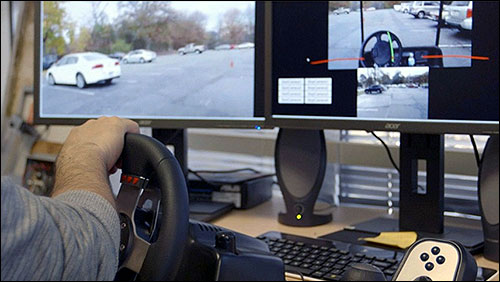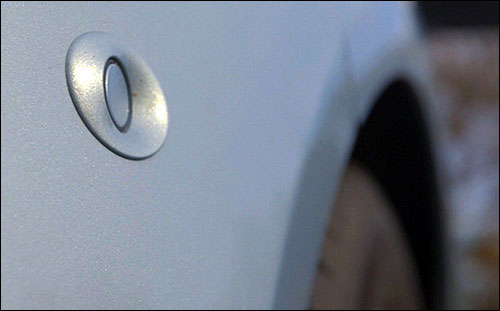Jan 08, 2015Increasingly, the annual Consumer Electronics Show (CES), in Las Vegas, is as much about cars—specifically, systems that connect vehicles to the Internet and sensor networks to provide added value for drivers or encourage safer driving—as it is about gadgets and other consumer electronics. During his CES keynote address this week, Mark Fields, Ford's chief operating officer, discussed features such as lane monitoring and parking assistance that leverage sensor systems integrated into current Ford vehicles. But he also referred to a long list of projects and collaborations in which the automobile company is leveraging sensor networks and cellular connectivity to create applications designed to improve urban mobility.
IOT Journal spoke with Dave McCreadie, Ford's manager of electric-vehicle infrastructure and smart grid, about two experiments the company conducted last year in collaboration with researchers at Georgia Tech. One, called Parking Spotter, used data collected from ultrasonic sensors integrated into the front and rear bumpers of a production vehicle to determine the locations of available parking spaces within a congested lot. For the second, dubbed Remote Repositioning, the researchers used Internet-connected video cameras and other hardware to remotely operate a golf cart to test a concept that could be useful for car-sharing operators or as precursor to full autonomous vehicles.
Parking Spotter
McCreadie says drivers today can choose from a growing list of smartphone-based applications, such as Parkopedia or Park Me, that provide assistance in finding available parking spots in certain cities or neighborhoods. But these services suffer from a "data-scarcity issue," he says, because they rely on an infrastructure of video cameras or sensors embedded into pavement or meters around parking spaces in order to monitor availability. That infrastructure is costly to install and, thus far, only covers a small percentage of all the parking areas in congested urban corridors. By leveraging the ultrasonic sensors embedded into the front and rear bumpers of most modern vehicles, he says, the services that offer parking assistance apps could tap into a vast pool of data showing parking availability anywhere that cars are located.
For the experiment, the researchers used a small dongle known as OpenXC that plugs into a vehicle's onboard diagnostic port, collects data from various vehicle systems and uploads that information to a cloud server. They programmed the device to collect data from the ultrasonic sensors in the car's bumpers and pair those readings with the vehicle's GPS coordinates. The car was then driven through a parking lot that had been mapped in a software program the researchers created. As the program captured the data from the dongle, available spots were marked on the map. This information was conveyed graphically via a smartphone application as well.
While the experiment involved only one vehicle being driven within a single lot, McCreadie believes it successfully proved the concept that cars can be turned into armies of parking-spot hunters. "The big 'so-what' is that this could solve the data scarcity of current parking applications, which put the onus on the city or parking lot owners to install [occupancy] sensors or cameras," he explains. "We have sensors on cars today that could be a low-cost solution to resolve the data scarcity."
Ford is looking to continue and expand the Parking Spotter experiment this year, by using the OpenXC dongle in a fleet of vehicles and continuing to examine how reliably the sensors detect open parking spots as the cars are driven at different speeds. The long-term result, McCreadie says, could be that many carmakers agree to collect and transmit this data through cellular connections built into their cars—a feature that only a handful of Ford models currently offer, but one that is expected to become standard issue in most cars on the road during the coming years—to cloud-based parking assistance applications, which could run either on a driver's phone or on an in-car display. The more vehicles that collect this data, he says, the richer and more accurate the parking availability apps will become.
Remote Repositioning
For the second experiment, Georgia Tech and Ford researchers outfitted a golf cart on the university's campus with four Internet-connected video cameras—which, combined, provided a 360-degree view around the vehicle. They also created a workstation in an office that contained computer monitors streaming the videos that the cameras were collecting, via AT&T's LTE cellular network. At the workstation, an individual could watch the video streams and use a steering wheel, accelerator and brake pedal connected via the LTE network to actuators that researchers built into the golf cart. In response to the inputs from the remote driver, these actuators pushed the accelerator or brake and turned the wheel in the golf cart.
In order to ensure that the cart would not run into anything should the network connection go down or latency cause a slow response, the researchers furnished the cart with a LiDAR sensor linked to the vehicle's braking system. The sensor emits a beam of laser light to detect the presence of nearby objects, and the researchers programmed the cart to come to an immediate stop if it sensed any obstacles within a 2-meter (6.6-foot) radius around the vehicle. (Note: The LiDAR was not yet added to the cart when the below video was shot; as such, it drives closer than 2 meters to the orange cones.)
This year, the researchers will continue the experiment but with an actual car, and their focus will be on testing the network connection's reliability and optimizing how much data is transmitted over the network at any given time, in order to ensure that the transmissions do not exceed the amount of available bandwidth.
"We can't have any gaps or delays in transmission," McCreadie says. "Thus far, the experiment has shown that yes, we can transmit reliably over an LTE network. But on a football Saturday on the campus, there would be thousands of people using their cell phones in the area of the car, and the network would perform differently."

Ford is interested in enabling remote operation of vehicles, McCreadie explains, because that feature could be attractive for various applications. For example, a car-sharing provider might use remote operation to ensure that all of its vehicles are parked in designated parking spots or lots when not in use, or it could even use the feature to bring a car to a customer's home as an added service. In the future, as cars become fully autonomous, new transportation services are likely to emerge that would dispatch a vehicle to a customer's home. These services could provide mobility to people who currently lack it due to a disability, for example. They will be popular in dense urban areas, McCreadie predicts, where the benefits of car ownership are low. But, he says, remotely operated vehicles could serve as a bridge to that evolution in the world of transportation.
"Everyone is working on autonomous vehicles. They are coming," McCreadie states. "But the technology is expensive, and there is a ton of infrastructure that is needed [before self-driving cars can be safely deployed]. This particular technology that we are testing, which keeps a human [driver] being in the loop, is something that could be deployed in the marketplace sooner, and at less cost than fully autonomous vehicles."

